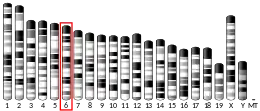| LPAR5 | |||||||||||||||||||||||||||||||||||||||||||||||||||
|---|---|---|---|---|---|---|---|---|---|---|---|---|---|---|---|---|---|---|---|---|---|---|---|---|---|---|---|---|---|---|---|---|---|---|---|---|---|---|---|---|---|---|---|---|---|---|---|---|---|---|---|
| Identifiers | |||||||||||||||||||||||||||||||||||||||||||||||||||
| Aliases | LPAR5, GPR92, GPR93, KPG_010, LPA5, lysophosphatidic acid receptor 5 | ||||||||||||||||||||||||||||||||||||||||||||||||||
| External IDs | OMIM: 606926 MGI: 2685918 HomoloGene: 10696 GeneCards: LPAR5 | ||||||||||||||||||||||||||||||||||||||||||||||||||
| |||||||||||||||||||||||||||||||||||||||||||||||||||
| |||||||||||||||||||||||||||||||||||||||||||||||||||
| |||||||||||||||||||||||||||||||||||||||||||||||||||
| |||||||||||||||||||||||||||||||||||||||||||||||||||
| |||||||||||||||||||||||||||||||||||||||||||||||||||
| Wikidata | |||||||||||||||||||||||||||||||||||||||||||||||||||
| |||||||||||||||||||||||||||||||||||||||||||||||||||
Lysophosphatidic acid receptor 5 also known as LPA5 is a protein that in humans is encoded by the LPAR5 gene.[5][6][7][8][9] LPA5 is a G protein-coupled receptor that binds the lipid signaling molecule lysophosphatidic acid (LPA).[10]
See also
References
- 1 2 3 GRCh38: Ensembl release 89: ENSG00000184574 - Ensembl, May 2017
- 1 2 3 GRCm38: Ensembl release 89: ENSMUSG00000067714 - Ensembl, May 2017
- ↑ "Human PubMed Reference:". National Center for Biotechnology Information, U.S. National Library of Medicine.
- ↑ "Mouse PubMed Reference:". National Center for Biotechnology Information, U.S. National Library of Medicine.
- ↑ White, Kenneth E.; Evans, Wayne E.; O'Riordan, Jeffery L.H.; Speer, Marcy C.; Econs, Michael J.; Lorenz-Depiereux, Bettina; Grabowski, Monika; Meitinger, Thomas; Strom, Tim M. (Dec 2000). "Autosomal dominant hypophosphataemic rickets is associated with mutations in FGF23". Nat Genet. 26 (3): 345–8. doi:10.1038/81664. PMID 11062477. S2CID 38870810.
- ↑ Lee DK, Nguyen T, Lynch KR, Cheng R, Vanti WB, Arkhitko O, Lewis T, Evans JF, George SR, O'Dowd BF (Sep 2001). "Discovery and mapping of ten novel G protein-coupled receptor genes". Gene. 275 (1): 83–91. doi:10.1016/S0378-1119(01)00651-5. PMID 11574155.
- ↑ Lee CW, Rivera R, Gardell S, Dubin AE, Chun J (Aug 2006). "GPR92 as a new G12/13- and Gq-coupled lysophosphatidic acid receptor that increases cAMP, LPA5". J Biol Chem. 281 (33): 23589–97. doi:10.1074/jbc.M603670200. PMID 16774927.
- ↑ Kotarsky K, Boketoft A, Bristulf J, Nilsson NE, Norberg A, Hansson S, Owman C, Sillard R, Leeb-Lundberg LM, Olde B (Jul 2006). "Lysophosphatidic acid binds to and activates GPR92, a G protein-coupled receptor highly expressed in gastrointestinal lymphocytes". J Pharmacol Exp Ther. 318 (2): 619–28. doi:10.1124/jpet.105.098848. PMID 16651401. S2CID 5989815.
- ↑ "Entrez Gene: GPR92 G protein-coupled receptor 92".
- ↑ Choi JW, Herr DR, Noguchi K, Yung YC, Lee CW, Mutoh T, Lin ME, Teo ST, Park KE, Mosley AN, Chun J (January 2010). "LPA Receptors: Subtypes and Biological Actions". Annual Review of Pharmacology and Toxicology. 50 (1): 157–186. doi:10.1146/annurev.pharmtox.010909.105753. PMID 20055701.
Further reading
- Takeda S, Kadowaki S, Haga T, Takaesu H, Mitaku S (2002). "Identification of G protein-coupled receptor genes from the human genome sequence". FEBS Lett. 520 (1–3): 97–101. doi:10.1016/S0014-5793(02)02775-8. PMID 12044878. S2CID 7116392.
This article is issued from Wikipedia. The text is licensed under Creative Commons - Attribution - Sharealike. Additional terms may apply for the media files.



